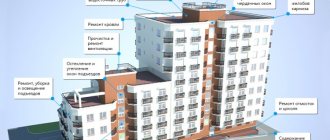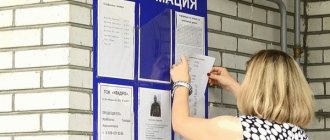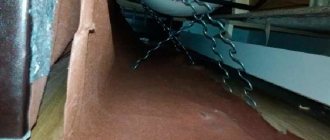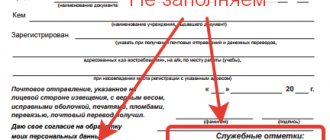The list of works and services for major repairs of common property in an apartment building is given in the following documents:
- Housing Code of the Russian Federation FZ-188 - part 1 (clause 1) of article 166 of chapter 15 of section IX
- Resolution of the State Construction Committee dated September 27, 2003 No. 170 “On approval of the Rules and Standards for the technical operation of the housing stock” - Appendix 8
- VSN 58-88 “Regulations on the organization and conduct of reconstruction, repair and maintenance of buildings, municipal and socio-cultural facilities” - in Appendix 9
- MDS81-35.2004 “Methodology for determining the cost of construction products on the territory of the Russian Federation” - clause 3.8
Let us present these points of these regulatory documents.
According to Appendix 8 of Gosstroy Resolution No. 170 of September 27, 2003:
Appendix No. 8 (recommended)
SAMPLE LIST OF WORK PERFORMED DURING CAPITAL REPAIRS OF HOUSING STOCK
1. Inspection of residential buildings (including a complete inspection of the housing stock) and preparation of design estimates (regardless of the period of repair work).
2. Repair and construction work to replace, restore or replace elements of residential buildings (except for the complete replacement of stone and concrete foundations, load-bearing walls and frames).
3. Modernization of residential buildings during their major renovation (redevelopment taking into account the disaggregation of multi-room apartments; installation of additional kitchens and sanitary units, expansion of living space due to auxiliary premises, improvement of insolation of residential premises, elimination of dark kitchens and entrances to apartments through kitchens with devices, with necessary, built-in or attached premises for staircases, sanitary facilities or kitchens); replacement of stove heating with central heating with the installation of boiler rooms, heat pipelines and heating points; rooftop and other autonomous heat supply sources; refurbishment of furnaces to burn gas or coal; equipment with cold and hot water supply systems, sewerage, gas supply with connection to existing main networks at a distance from the input to the connection point to the main lines up to 150 m, installation of gas ducts, water pumps, boiler rooms; complete replacement of existing central heating systems, hot and cold water supply (including the mandatory use of modernized heating devices and pipelines made of plastic, metal-plastic, etc. and a ban on the installation of steel pipes); installation of household electric stoves instead of gas stoves or kitchen fires; installation of elevators, garbage chutes, pneumatic garbage removal systems in houses with a landing of the upper floor of 15 m and above; transfer of the existing power supply network to higher voltage; repair of television antennas for collective use, connection to telephone and radio broadcasting networks; installation of intercoms, electric locks, installation of automatic fire protection and smoke removal systems; automation and dispatching of elevators, heating boiler houses, heating networks, engineering equipment; improvement of courtyard areas (paving, asphalting, landscaping, installation of fences, wood sheds, equipment of children's and utility areas). Repair of roofs, facades, joints of prefabricated buildings up to 50%.
4. Insulation of residential buildings (work to improve the heat-insulating properties of enclosing structures, installation of triple-glazed window fillings, installation of external vestibules).
5. Replacement of intra-block utility networks.
6. Installation of meters for metering thermal energy consumption for heating and hot water supply, cold and hot water consumption for the building, as well as installation of apartment meters for hot and cold water (when replacing networks).
7. Reconstruction of unventilated combined roofs.
8. Design supervision of design organizations for major repairs of residential buildings with full or partial replacement of floors and redevelopment.
9. Technical supervision in cases where local government bodies and organizations have created units for technical supervision of major repairs of housing stock.
10. Repair of built-in premises in buildings.
What is included in the concept of major repairs?
Major repairs are a set of works and (or) services for replacement or restoration of:
- engineering and technical communications;
- parts of load-bearing structures;
- individual sections of non-load-bearing walls.
Money for major repairs in an apartment building comes from home owners and is stored in specially created funds (Article 169 of the Housing Code of the Russian Federation), the method of formation of which is chosen by the owners themselves. Funds can be formed:
- On the account of the regional operator , the funds received by the fund are managed by the regional authorities. Money received from the owners of apartments in apartment buildings is stored in the general fund of the constituent entity of the Russian Federation. The order of capital work is established by the regional program.
- On an individual MKD account , the money collected goes towards the renovation of one specific house. Home owners open a bank account, which can be managed by a management company (MC) or a housing cooperative.
Major renovations are carried out in buildings with more than 3 apartments . In houses that are recognized as unsafe or subject to demolition , repair work is not carried out at the expense of the fund. Owners of apartments located in such buildings are exempt from the obligation to make payments.
According to Appendix 9 of VSN 58-88:
APPENDIX 9 Recommended
List of additional work performed during major repairs of buildings and facilities
1. Inspection of buildings (including a comprehensive survey of the housing stock) and preparation of design estimates (regardless of the period of repair work).
2. Redevelopment of apartments that does not cause a change in the main technical and economic indicators of the building, an increase in the quantity and quality of services, equipment in apartments, kitchens and sanitary facilities; expansion of living space due to utility rooms; improvement of insolation of residential premises; elimination of dark kitchens and entrances to apartments through kitchens with the installation, if necessary, of built-in or attached premises for staircases, sanitary facilities or kitchens, as well as balconies, loggias and bay windows; replacement of stove heating with central heating with the installation of boiler rooms, heat pipelines and heating points; refurbishment of furnaces to burn gas or coal; equipment with cold and hot water supply, sewerage, gas supply systems with connection to existing main networks at a distance from the input to the connection point to the mains up to 150 mm; installation of gas ducts, water pumps, boiler rooms; installation of household electric stoves instead of gas stoves or kitchen fires; installation of elevators, garbage chutes, pneumatic garbage removal systems in houses with an upper floor landing level of 14 m and above; transfer of the existing power supply network to higher voltage; installation of television and radio antennas for collective use, connection to telephone and radio broadcast networks; installation of intercoms, electric locks; installation of automatic fire protection and smoke removal systems; automation and dispatching of heating boiler houses, heating networks, heating points and engineering equipment of residential buildings; improvement of courtyard areas (paving, asphalting, landscaping, installation of fences, wood sheds); equipment for children's, sports (except stadiums) and utility areas; dismantling of emergency houses; changing the roof structure; equipment of attic premises of residential and non-residential buildings for use.
3. Replacement of existing and installation of new technological equipment in buildings for communal and socio-cultural purposes.
4. Insulation and noise protection of buildings.
5. Replacement of worn-out elements of intra-block engineering networks.
6. Repair of built-in premises in buildings.
7. Examination of design and estimate documentation.
8. Design supervision of design organizations.
9. Technical supervision.
10. Carrying out repair and restoration work on monuments under state protection.
Who does the overhaul
Responsibility for completing the work falls on the shoulders of the regional operator if residents decide to accumulate funds in his account. RO maintains a special register of contractors throughout the Russian Federation who are ideal for major repairs. The regional operator is approved based on the decision of the authorities.
If residents decide to open a special bank account, they can choose the contractor themselves. The most important thing is that it is accredited and has the necessary permits and licenses to carry out construction work.
According to clause 3.8 of MDS81-35.2004:
clause 3.8. Major repairs of buildings and structures include work to restore or replace individual parts of buildings (structures) or entire structures, parts and engineering equipment due to their physical wear and tear with more durable and economical ones that improve their performance.
Major repairs of external utilities and improvement facilities include repairs of water supply, sewerage, heat and gas and electricity networks, landscaping of courtyard areas, repair of paths, driveways and sidewalks, etc.
Preventive (current) repairs consist of systematically and timely work carried out to prevent wear of structures, finishing, engineering equipment, as well as work to eliminate minor damage and malfunctions.
Major and current repairs (concept and differences)
List of works for current repairs of an apartment building
Does the house need major renovations?
Any home will sooner or later need major repairs, even a new building. In any case, it will lose its performance characteristics over time. The timing of work for each building is determined individually by the Regional Capital Repair Program.
This document indicates the order of houses (the oldest ones are first on the list, and new buildings are at the end). The program also contains a list of recommended works. The need for major repairs is determined based on three factors: the year the building was put into operation, the date it was last carried out, how regularly the owners pay contributions (the amount of the accumulated amount).
How is the contribution calculated?
The municipal government, represented by the tariff department, sets the minimum contribution (tariff) for the overhaul of a residential building on its territory. By default, it is applied to all residential buildings in the village, but residents can change it upward if they wish. The fee for an individual apartment or premises is calculated as a tariff multiplied by the total area of the premises.
For example, if the city has a tariff of 7.08 rubles per meter, then for an apartment of 56 meters the monthly payment will be 396.48 rubles.
conclusions
Overhaul of residential buildings is a fairly new phenomenon for Russian citizens:
- The responsibility for collecting money for major repairs lies with the owners. Quality control is carried out by the municipal authorities.
- Financial issues (for example, tariffs) are the responsibility of regional authorities. No federal contributions have been established.
- You can accumulate money in a general account with a regional operator or in a separate MKD bank account - at the request of the owners.
- Issues of major repairs are resolved at a general meeting of owners. A qualified majority of 2/3 votes is required to make a decision.
- Refusal to carry out major repairs is not allowed, and civil liability is established for non-payment of contributions.
- The list of houses and works is compiled annually and reflected within the framework of the regional overhaul program.
If you still have questions about the topic of the article, ask them to our online specialist in the chat. We will be grateful for your like and repost of the article! Subscribe to the newsletter so you don't miss important news.
Look for more interesting articles about real estate in the corresponding section of the site.










